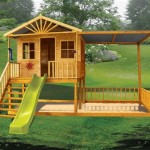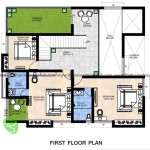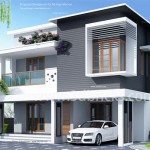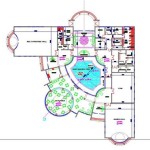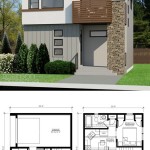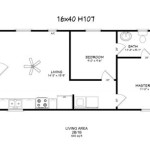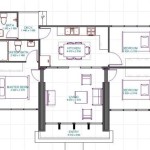3 Dog House Plans: Shelter and Style for Your Canine Companion
Providing adequate shelter for a dog is a fundamental responsibility for pet owners. A dog house offers protection from the elements, a sense of security, and a personal space that contributes to the dog's overall well-being. The following outlines three distinct dog house plans, catering to varying needs, skill levels, and aesthetic preferences. Each plan is discussed in detail, covering material considerations, construction steps, and potential modifications.
Plan 1: The Classic A-Frame Dog House
The A-frame dog house is a familiar and relatively simple design, known for its characteristic triangular shape. It is a popular choice due to its ease of construction and efficient use of materials. The sloped roof provides effective water runoff, making it suitable for regions with frequent rainfall. This plan emphasizes functionality and ease of assembly, making it an excellent option for novice builders.
Material Selection: The primary materials for the A-frame dog house are plywood, lumber (for framing), roofing felt, and shingles. Pressure-treated lumber is recommended for ground contact to prevent rot and decay. Plywood thickness should be at least ½ inch for adequate structural integrity. The choice of shingles will depend on the desired aesthetic and weather resistance. Asphalt shingles are a common and affordable option, while cedar shakes offer a more rustic appearance but require more maintenance.
Construction Steps: The construction process begins with cutting the plywood to the required dimensions for the side walls and roof panels. Refer to a detailed plan for specific measurements, which will vary depending on the desired size of the dog house. The side walls are typically triangles, while the roof panels are rectangular. The lumber is then used to create a frame around the perimeter of each plywood panel, providing structural support and a surface for attaching the panels together. The front and back walls can be solid or include an opening for entry. The size of the opening should be appropriate for the dog's size, allowing easy access while minimizing exposure to the elements. Once the panels are assembled, they are joined together to form the A-frame structure. Roofing felt is applied to the roof panels as an underlayment, followed by shingles, which are secured with roofing nails. Finally, the interior can be insulated for added warmth during colder months.
Modifications: This plan can be easily modified to suit specific needs. For instance, a porch can be added to the front of the dog house, providing a sheltered area outside the entrance. The interior can be lined with cedar shavings or a comfortable dog bed for added comfort. The roof angle can also be adjusted to create a steeper or shallower slope, depending on aesthetic preferences and desired water runoff.
Plan 2: The Insulated Box Dog House
The insulated box dog house prioritizes thermal comfort, making it ideal for dogs living in climates with extreme temperatures. The box design allows for easy insulation of the walls, floor, and roof, creating a more stable and comfortable environment for the dog. This plan requires a slightly higher level of construction skill due to the added complexity of insulating the structure, but the benefits in terms of temperature regulation are significant.
Material Selection: In addition to plywood and lumber, this plan requires insulation material, such as rigid foam insulation or fiberglass batting. Rigid foam insulation is generally preferred due to its resistance to moisture and pests. The thickness of the insulation will depend on the severity of the climate, with thicker insulation providing better thermal performance. A vapor barrier is also necessary to prevent moisture from condensing within the insulation, which can reduce its effectiveness and promote mold growth. Exterior siding, such as vinyl siding or wood siding, can be added for aesthetic appeal and added protection from the elements.
Construction Steps: The construction process begins with building a box frame using lumber. The dimensions of the box will depend on the desired size of the dog house. The floor, walls, and roof are then constructed from plywood, ensuring that the panels fit snugly within the frame. Insulation is cut to size and inserted into the cavities between the frame members. A vapor barrier is then applied over the insulation, sealing all seams and edges. The exterior siding is attached to the frame, covering the insulation and vapor barrier. The roof is typically sloped slightly to allow for water runoff. An overhang can be added to the roof to provide additional protection from the sun and rain. The interior can be finished with a smooth surface, such as sanded plywood or a durable paint, to make cleaning easier.
Modifications: Several modifications can be made to enhance the functionality of the insulated box dog house. A hinged roof can be added to provide easy access for cleaning and maintenance. A small window can be installed to allow natural light to enter the dog house. A heating pad or fan can be added to provide supplemental heating or cooling, depending on the climate. The entry can be equipped with a flap or curtain to further reduce drafts and maintain a stable temperature inside the dog house.
Plan 3: The Elevated Dog House with Deck
The elevated dog house with a deck offers a combination of shelter and outdoor space. Raising the dog house off the ground provides several advantages, including improved ventilation, reduced exposure to moisture, and protection from pests. The deck provides a comfortable outdoor area for the dog to relax and enjoy the sun. This plan requires more advanced construction skills due to the complexity of building the elevated platform and deck, but the result is a stylish and functional dog house that enhances the dog's living environment.
Material Selection: In addition to the materials required for a standard dog house, this plan requires lumber for building the elevated platform and deck. Pressure-treated lumber is essential for all components that come into contact with the ground. Decking boards, such as composite decking or pressure-treated lumber, are used for the deck surface. Railings can be added to the deck for safety, especially for dogs that are prone to jumping. Hardware, such as screws, nails, and bolts, must be durable and weather-resistant.
Construction Steps: The construction process begins with building the elevated platform. This involves constructing a frame from pressure-treated lumber and supporting it with posts that are set into the ground. The platform should be level and stable. The dog house is then built on top of the platform, following the construction steps outlined in either the A-frame or box dog house plans. The deck is then constructed adjacent to the dog house, connecting to the platform. The decking boards are attached to the frame, creating a smooth and level surface. Railings are installed around the perimeter of the deck, ensuring that they are securely fastened to the frame. A ramp or stairs can be added to provide easy access to the deck for the dog.
Modifications: Many modifications can be made to personalize the elevated dog house with a deck. The size and shape of the deck can be customized to suit the available space and the dog's needs. A shade structure, such as an awning or pergola, can be added to provide protection from the sun. Landscaping can be incorporated around the base of the platform to enhance the aesthetic appeal of the dog house. A water bowl and food dish can be placed on the deck for convenient feeding. The dog house can be painted or stained to match the surrounding environment.
Ultimately, the best dog house plan depends on individual needs, preferences, and skill level. Careful consideration of the climate, the dog's size and breed, and the available resources will help in selecting the most appropriate plan. Constructing a well-built dog house provides a safe, comfortable, and secure environment for a canine companion, contributing to their overall well-being and happiness.

14 Diy Dog Houses How To Build A House Plans Blueprints

Triple Dog Cabin Run House Plans Kennel Furniture Custom Houses

12x16 K3 Dog Kennel Plans 3 Stall Shelter

15 Free Large Dog House Plans Your Dogs Will Love Pallet Diy

Buy 3x3 Dog House Plans In

60 Best Dog House Ideas And Designs The Paws Diy Outdoor Plans

Buy 3x3 Dog House Plans In

15 Free Dog House Plans Puppy Leaks

How To Build A Dog House Plans Diy
:strip_icc()/sunset-free-doghouse-plans-5829ef8f5f9b58d5b18b1c6e.jpg?strip=all)
14 Free Diy Dog House Plans Anyone Can Build

